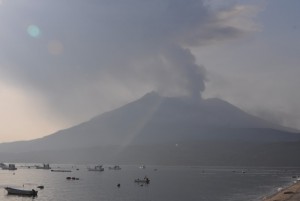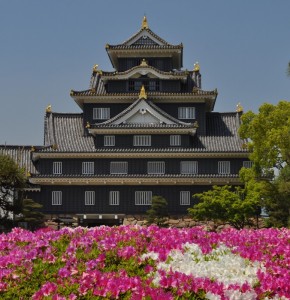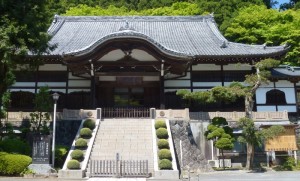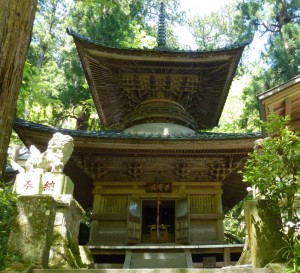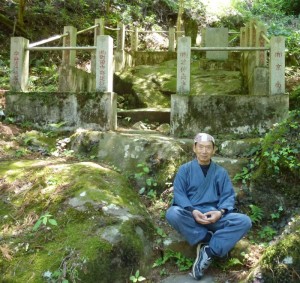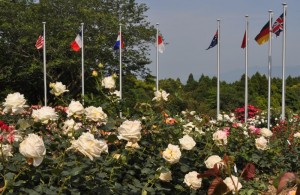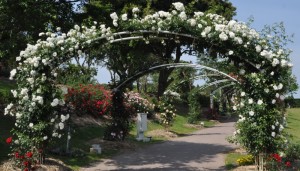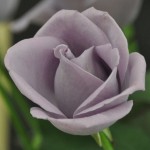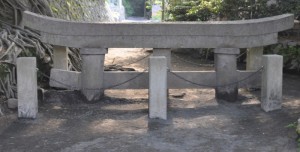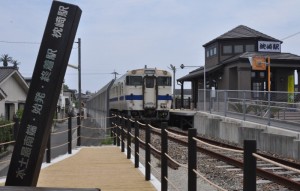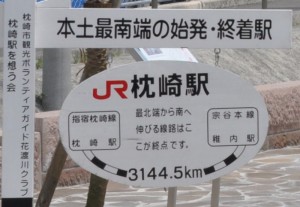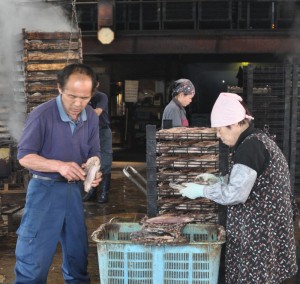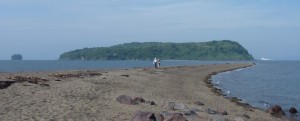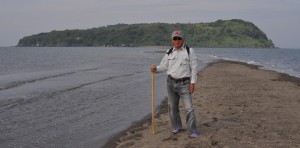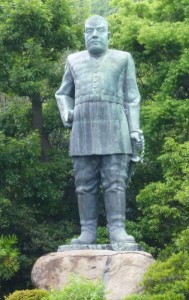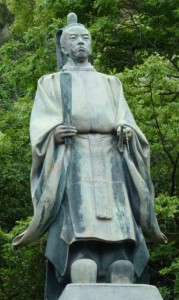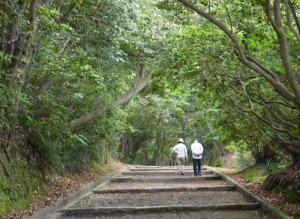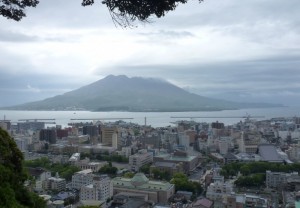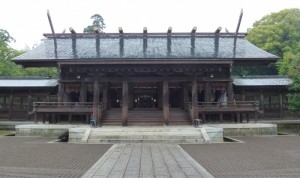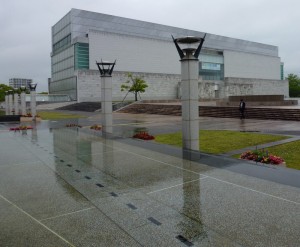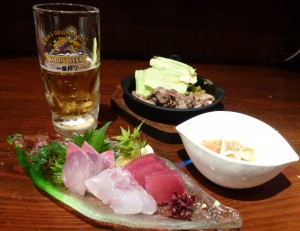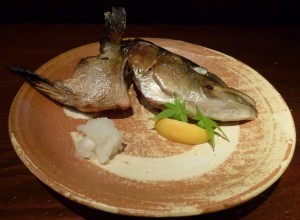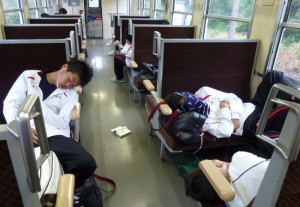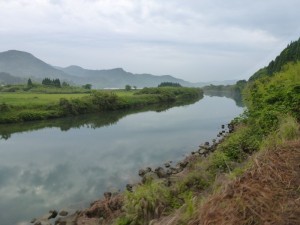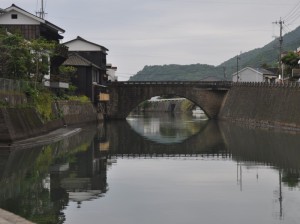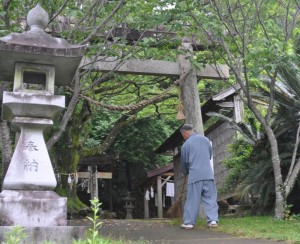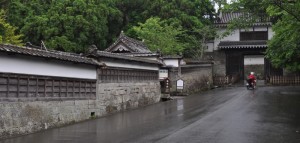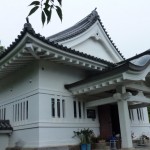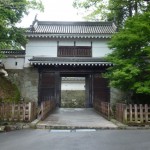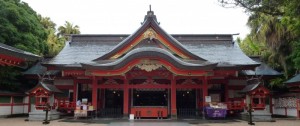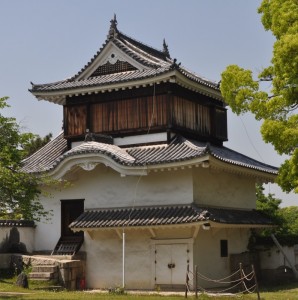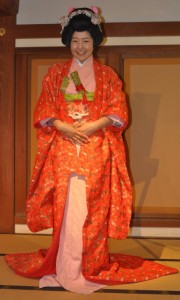Fukuoka, Kagoshima & Miyazaki
May 7 Tuesday: Atami – Odarawa, Honshu – Fukuoka, Kyushu
I got up early so that I could take a quick look at Atami, a city I have visited twice. As expected, it is touristic with plenty of souvenir shops. I took the 8:20am Shinkanshin back to Odarawa where I would be meeting Harry, a Japanese whom I met last September in Turkmenistan. I left the overland tour when he joined the group to go all the way to Istanbul. He is 77 years old but fit and full of energy!
Harry took me to visit Daiyuzan Saijoji, one of the most famous temples of the Soto Zen Buddhist Sect founded by Ryoan Emyo (1337-1411) in 1394 in Sagami (now the city of Minami Ashigara). We took a train and then a bus to this temple compound with some 30 halls. The most striking feature is the abundance of cedar trees (over 20,000 in total). Hence it is also known as “The Cedar Wood of Daiyuzan”. We went all the way to the hill top climbing some 180 steps. We had a most delicious sashimi lunch followed by a quick tour of the Odarawa Castle. I took the 2:08pm Shinkanshin train for Fukuoka. I arrived in my hotel before 9pm.
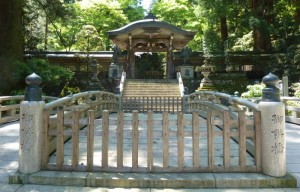 |
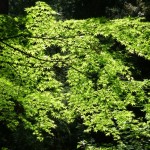 |
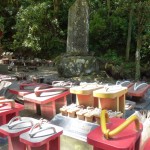 |
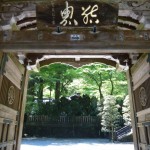 |
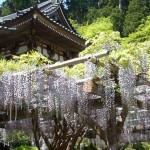 |
May 8 Wednesday: Fukuoka – Kagoshima – Sakurajima – Kanoya Rose Garden – Fukuoka
I had a wonderful day. I took the 9:07am train and arrived in Kagoshima before 10:42am. After checking in a hotel near the station, I headed to Sakurajima, a famous island with an active volcano opposite Kagoshima. The ferry only takes some 15 minutes. On the ferry, I met a nice couple, Kaiko and Masahiko on their way to the Kanoya Rosa Garden. As I had no specific plan, they invited me to join them to see this special garden. I gladly accepted their invitation and spent the next six hours with them.
The drive took more than an hour and a half. They stopped mid-way and invited me for lunch. The Kanoya Rose Garden located within the Kirishima-Gaoka Park overlooking the Kinko Bay is the largest rose garden in Japan. It was a beautiful day and we spent almost two hours strolling in the garden.
On our way back, we saw smokes coming out from the active volcano. I was very excited and Mashuko took the round-island route in order to show me the Kurokanmi buried shrine gate caused by an eruption in 1914 and the Yunohira Observatory where I could have a full view of the summit of the volcano. Though they do not speak English, we communicated using Chinese characters and sign language. They are charming and I fully appreciate their generosity and friendship.
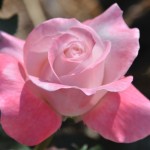 |
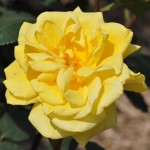 |
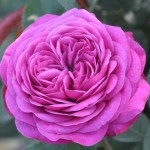 |
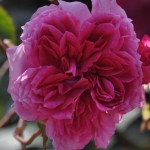 |
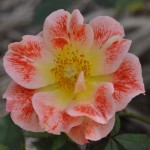 |
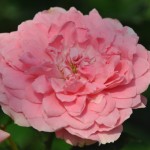 |
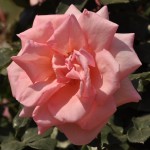 |
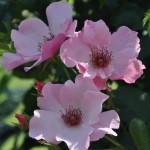 |
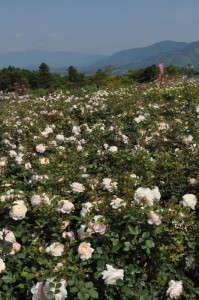 |
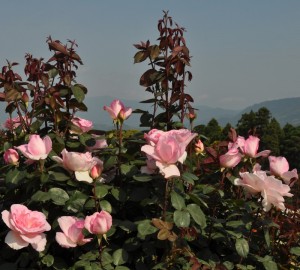 |
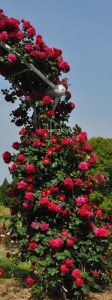 |
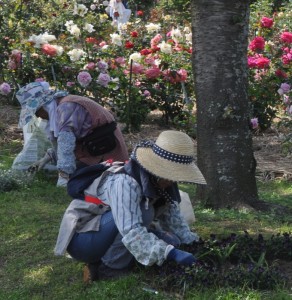 |
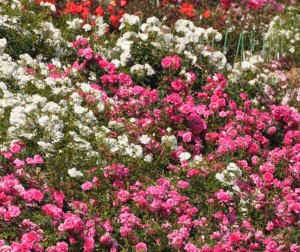 |
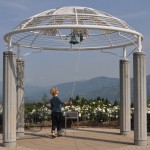 |
May 9 Thursday: Kagoshima – Ibusuki – Makurazaki – Ibusuki – Kagoshima
There is a morning market near the train station. I went there before strolling along the Kotsuki River which is also named ‘Road to the Meiji Restoration’ as many historical places scatter along the river. I saw a restored Samurai House and the birthplace of Saigo Takamori (1827-1877) who was a great contributor to modernization of Japan during between late Edo and the Meiji Restoration and has been dubbed as the last true samurai. If I had time, I would love to visit the Museum of the Meiji Restoration to better understand the history of modern Japan and the role leading figures in Kyushu have played.
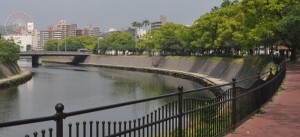 |
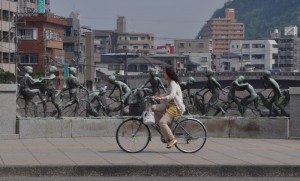 |
I took a scenic train ride from Kagoshima to Ibusuki at 9:54am. The train is an old train but nicely renovated one with wood paneling. It was full of local tourists and I was the only non-Japanese on the train. Since I have reached the northernmost point in Japan when I was in Wakkanai, I decided to make my way to Japan Rail’s southernmost station at Makurazaki. There is not much to see there and my only achievement was to take a photo of the station!
I took a normal train back to Ibusuki. The main attraction is to see Chiringashima, an island linked by a sandbank to the mainland during low tides. I did not notice the warning about the time of high tide as it was written in Japanese. Luckily a gentleman warned me not to go further as I might not have enough time to return to the mainland. I sat with him at Tara Cape watching the tide coming in and missed the bus that left at 4pm. I planned to walk back to the train station and was moved when he kindly offered me a lift to the station. As a result, I even had time to walk along the bay for an hour before boarding my train. I was lucky to meet so many wonderful and kind people on this trip!
In the evening, I went to a nice place with 26 small eateries for dinner and met two nice Japanese ladies from Fukuoka. I had paella (Spanish seafood rice) cooked with local squid and chicken. It tasted very good but did not resemble paella! I wished I had taken my camera so that I could have taken pictures of the dishes I had and my Japanese friends!
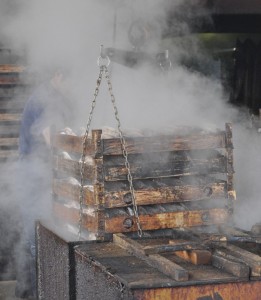 |
May 10 Friday: Kagoshima – Miyazaki
Before leaving Kagoshima for Miyazaki, I spent over three hours walking around the city. Getting up before 7am, I was already on the road at 7:30am. I took the street tram and followed the Road of History and Culture where the Kagoshima Prefectural Museum of Culture Reimeikan and the City Museum of Art are located. Unfortunately, they were not open yet. I saw the statutes of Saigo Takamori and Shimadzu Nariakira (the revered 28th lord of the Shimadzu family) before reaching the Shiroyama Observatory which affords an excellent view of downtown Kagoshima, Sakurajima volcano and Kinko Bay.
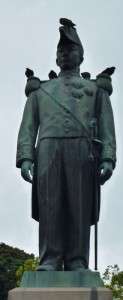 |
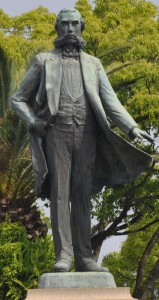 |
It began to rain and I had an early lunch before boarding the train for Miyazaki at 11:47am. The two-hour ride is scenic dotted with mountains, forest, rivers, cultivated fields and traditional Japanese houses. It looked even more atmospheric in the mist and rain.But I was so tired that I slept most of the way.
I stayed in a hotel right next to the station. Once I put down my backpack, I headed off to the Miyazaki-jingu Shrine which is a must-see. It was raining and the shrine hidden in the wood looked solemn. A fully dressed priest was performing a ceremony in the main hall with drum music. I was the only person around and found the atmosphere somewhat mysterious.
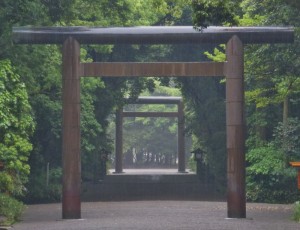 |
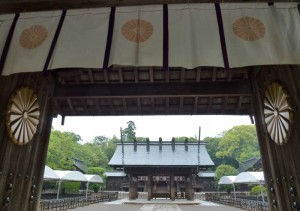 |
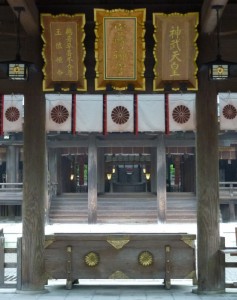 |
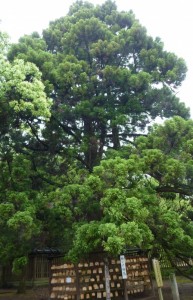 |
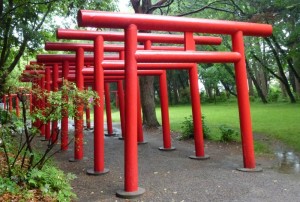 |
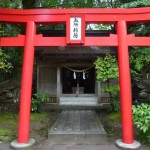 |
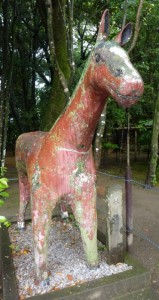 |
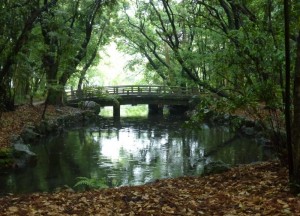 |
My next stop was the nearby Miyazaki Prefectural Art Museum opened in 1995. Admission is free to the permanent collection which is more interesting than the one in Akita where I had to pay ¥800.In the evening, I went to the entertainment district which has hundreds of bars and restaurants. I was lucky to go to the ‘Hot Pepper’ and had a set meal with three small dishes (sashimi, grilled fish and chicken) and a beer for ¥1250. I was so happy that I later ordered a grilled fish head (baby amber jack) and a Miyazaki beef sushi. My total bill came up to ¥2600. Great value!
May 11 Saturday: Miyazaki – Aburatsu – Obi – Aoshima – Fukuoka
There is a scenic train ride between Miyazaki and Nango on weekends. As the train had been fully booked, I had to make my own way. Taking the first train at 5:33am, I arrived in Aburatsu at 7:22am. The town is famous for the Horikawa Canal and its warehouses and the nearby Udo Shrine. The bus to Udo Shrine would not be departing till 8:10am. I therefore just strolled along the canal before taking the 8:50am train back to Obi which is more historical and interesting. I made the right decision.
I arrived in Obi at 9am and put my backpack in a locker (¥300). Obi is famous for its castle and old houses. I brought a combined ticket for ¥500 to see 7 attractions namely the Obi Castle, Koshokan (a garden), Matsuo no Maru, Obi Clan Historical Museum, The Komura Memorial Hall which honours Baron Jutaro Komura, a great diplomat of the Meiji period who was born in Obi, the residence of Ihei Yamatomo and Genjiro Takahashi and a Merchant Museum. I found Obi charming and had a most enjoyable time. I missed many places of interest as I had to take the 11:42 am train to Aoshima.
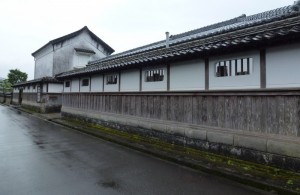 |
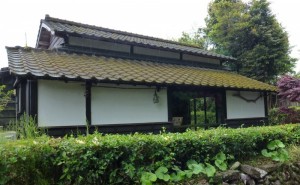 |
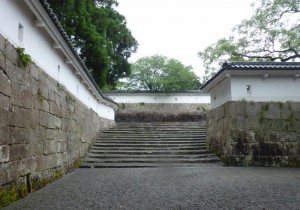 |
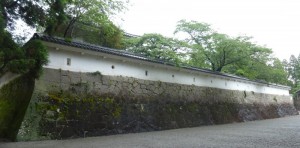 |
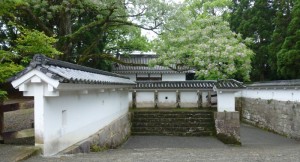 |
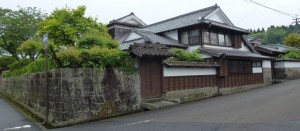 |
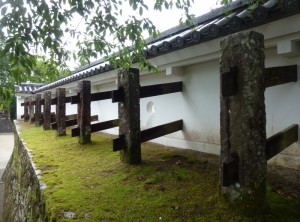 |
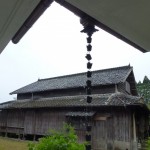 |
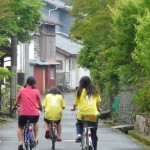 |
Visitors come to Aoshima mainly to see an island with special mud and sand rock features and a shrine. I spent over an hour strolling around this small island before taking the train at 1:44pm to return to Miyazaki where I took a fast train at 2:40pm for Kagoshima to change for another train. I finally arrived in Fukuoka at 6pm.
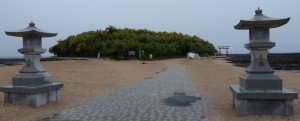 |
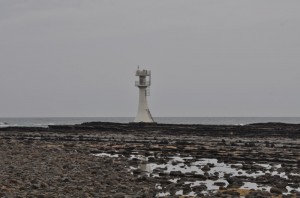 |
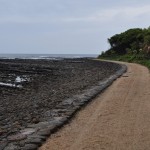 |
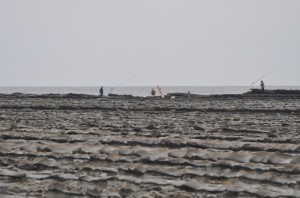 |
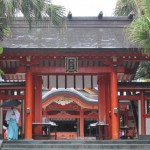 |
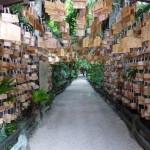 |
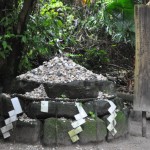 |
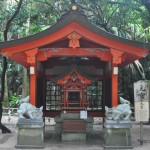 |
I had fun in finding my hostel located in the Tienjin area known for night life and shopping. As most of the hotels were full, I either had to pay an exorbitant price or stay in hostel. I therefore booked a hostel online. I found my way to Daimaru and asked for direction at the information counter. Two pretty young ladies came to my rescue: they called the hostel to get direction and accompanied me all the way to the hostel that is hidden away in a residential area. They have not been to this area before and we had a good laugh all the way.
The hostel is run by Ken and has beds for at 12-16 persons. It cannot be compared with the superior Piece Hostel in Kyoto (though the charge is similar). The kitchen which is also the common room is cozy but messy and dirty. But what surprises me most is the manner of a young lady in my room. She is inconsiderate and messy with things all over the place. When she came back in the early hours, she made lots of noises and talked on the phone for a long time. An interesting way to discover another side of Japan!
May 12 Sunday: Fukuoka, Kyushu – Okayama, Honshu – Takamatsu, Shikoku
I did not sleep well and got up early. I enjoyed a morning stroll in the deserted streets. On my way to the Sunline Hotel to pick up my suitcase, I visited a shrine. I took the 10:09am Shinkansen and arrived in Okayama at noon. There are many nice restaurants in the railway station and I had a big bowl of noodles (¥750).
I walked to the Okayama Castle on the bank of the Asahi River. The nickname of the castle is Crow Castle owing to its black appearance. Built by the feudal landlord Ukita Hideie in 1597, the castle used to have an elaborate donjon (the central building of the whole castle), 35 turrets and 21 gates. In 1882, the government demolished dozens buildings as it could not maintain it. The original donjon was burnt to the ground in June 1945 (with the exception of Tsukimi Yagura (Turret for Moon-viewing). Most of structures standing today were reconstructed in 1966. I brought a combined ticket for visiting the castle and the Korakuen Garden for ¥560. It was a very hot day and I did not feel doing much.
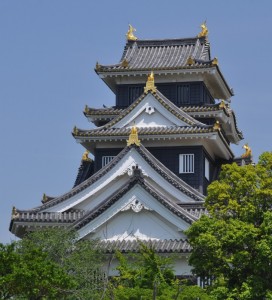 |
I ended up spending most of the afternoon in the Korakuen Garden which according to the leaflet is one of the three most beautiful gardens in Japan. Constructed under the order of Ikeda Tsunamasa (a feudal lord) in 1687, the garden was completed in 1700. Though all the trees, ponds, streams, rocks, rice and tea fields, plum grove and structures including halls, shrines, houses and bridges and ornaments are all well planned and designed, the garden carpeted with grass with wide open field, the Okayama Castle and nearby mountains as backdrops looks surprisingly natural, relaxing but graceful. I enjoyed the golden carps in the pond and sitting in the shade admiring the garden.
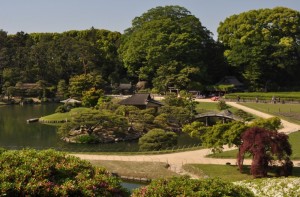 |
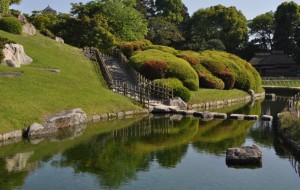 |
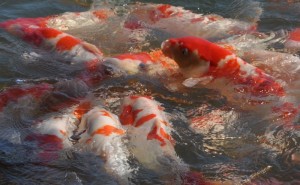 |
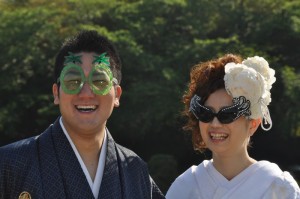 |
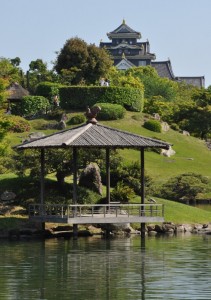 |
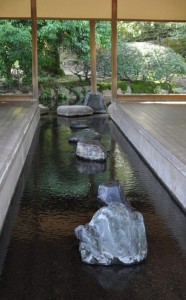 |
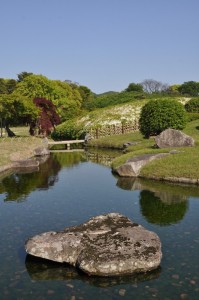 |
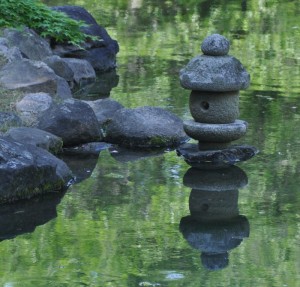 |
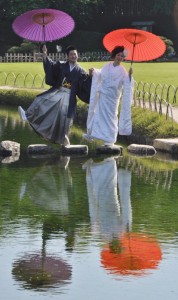 |
I left the garden after 5pm and walked back to the station. The train departed for Takamatsu at 6:12pm and I arrived at my destination an hour later. I checked in Tokoyu Inn and was surprised to give a lower rate for lodgers on the 88-Temple Pilgrimage (¥4500 a night including breakfast). A nice surprise!


